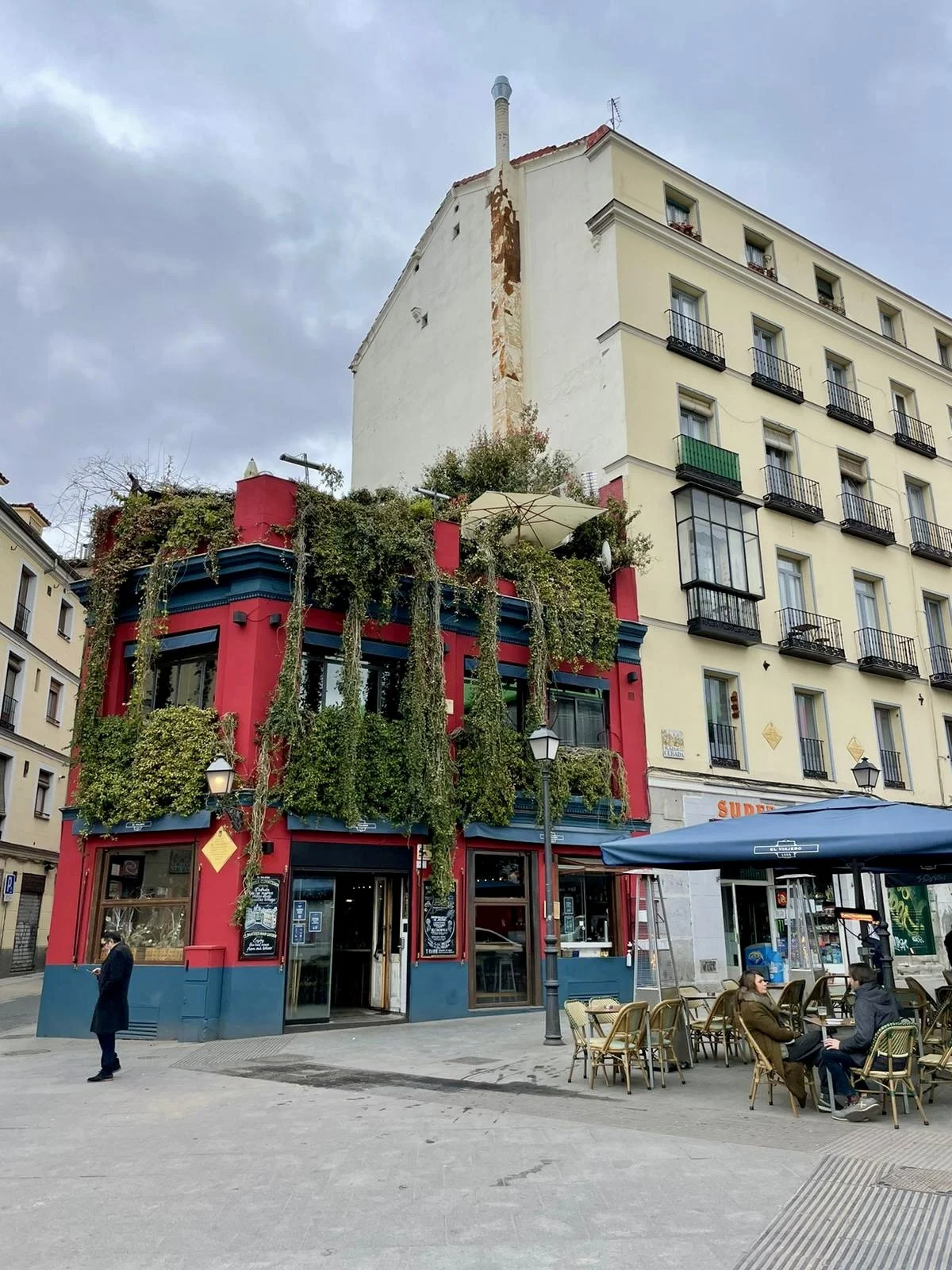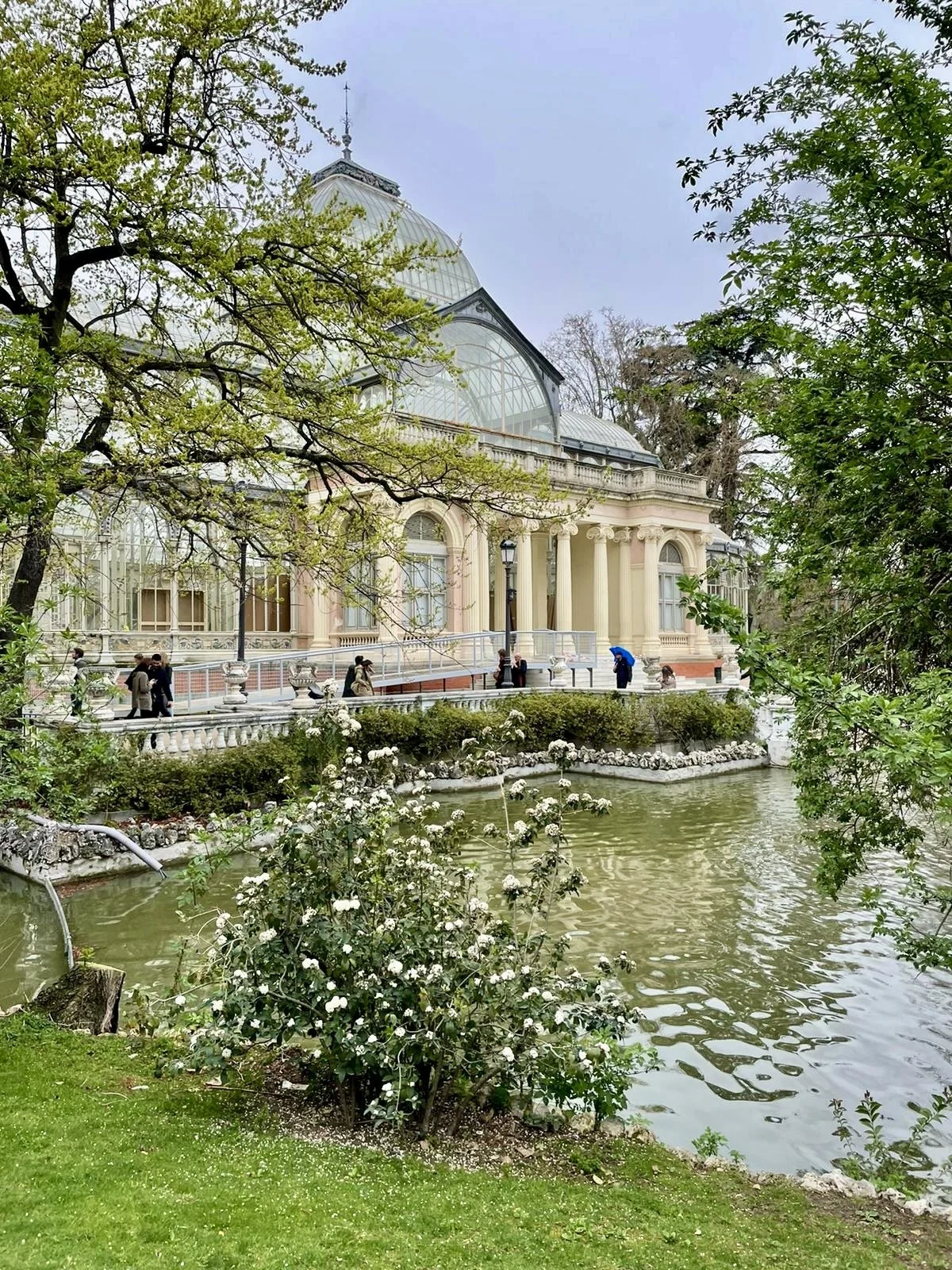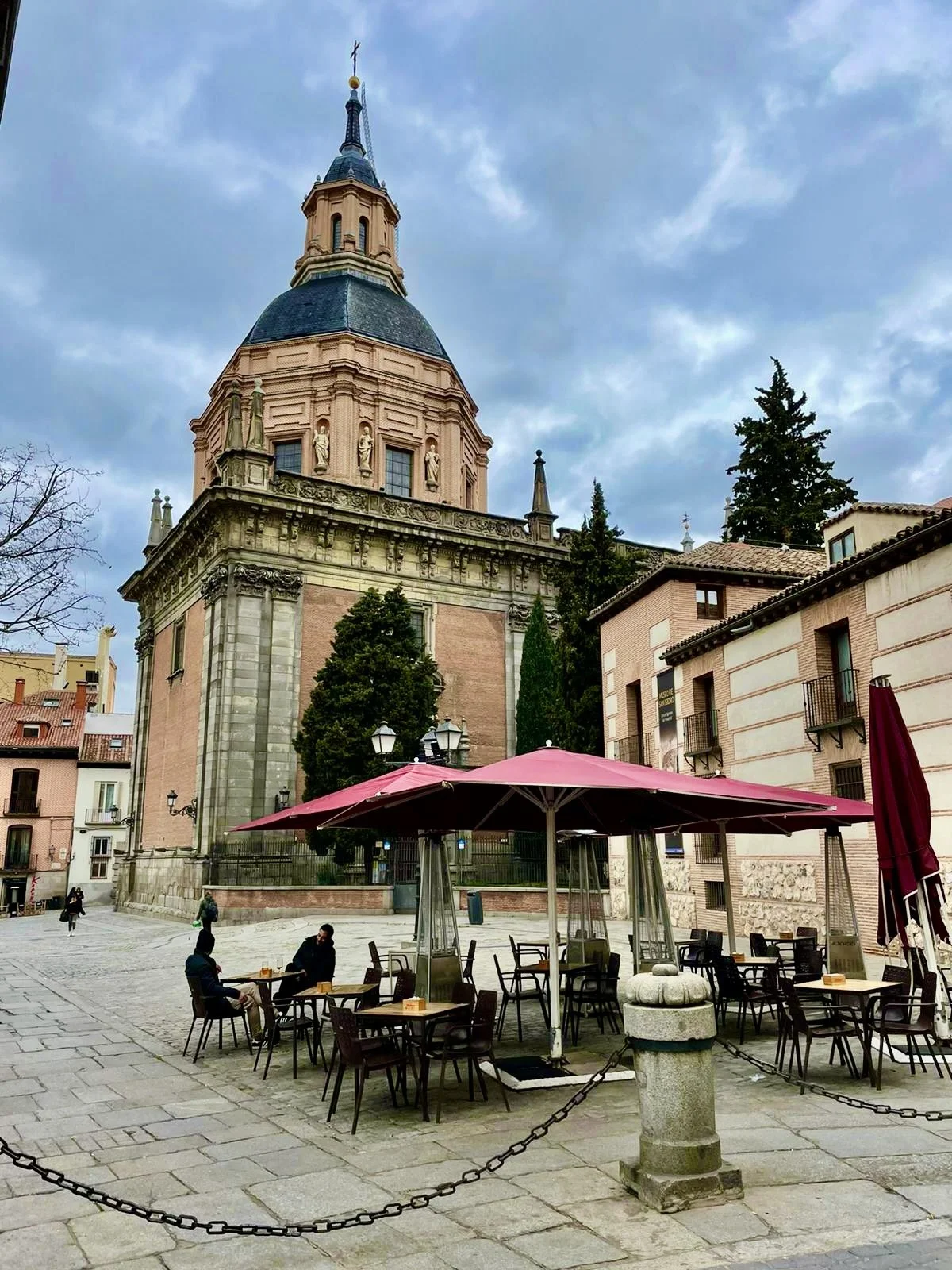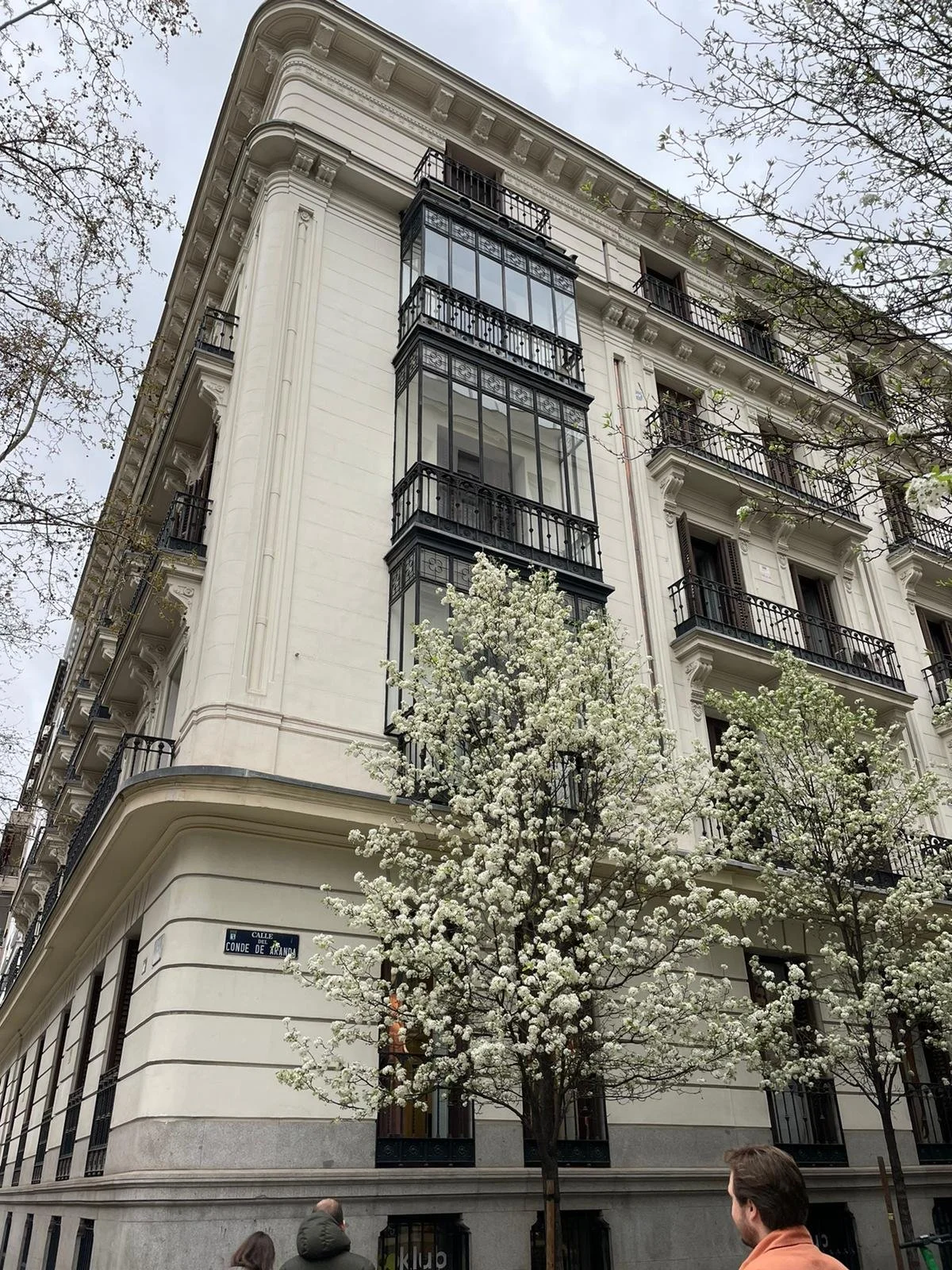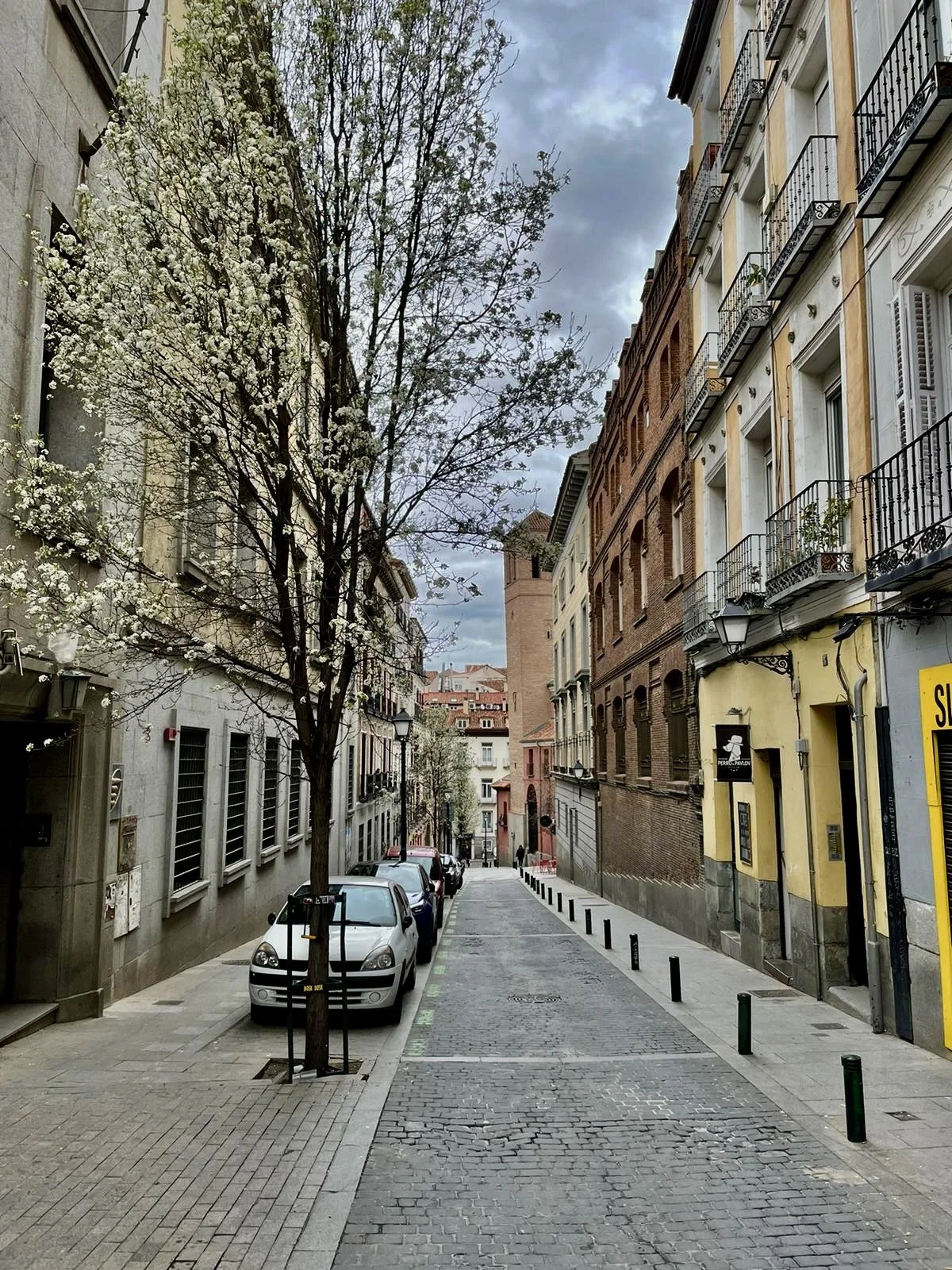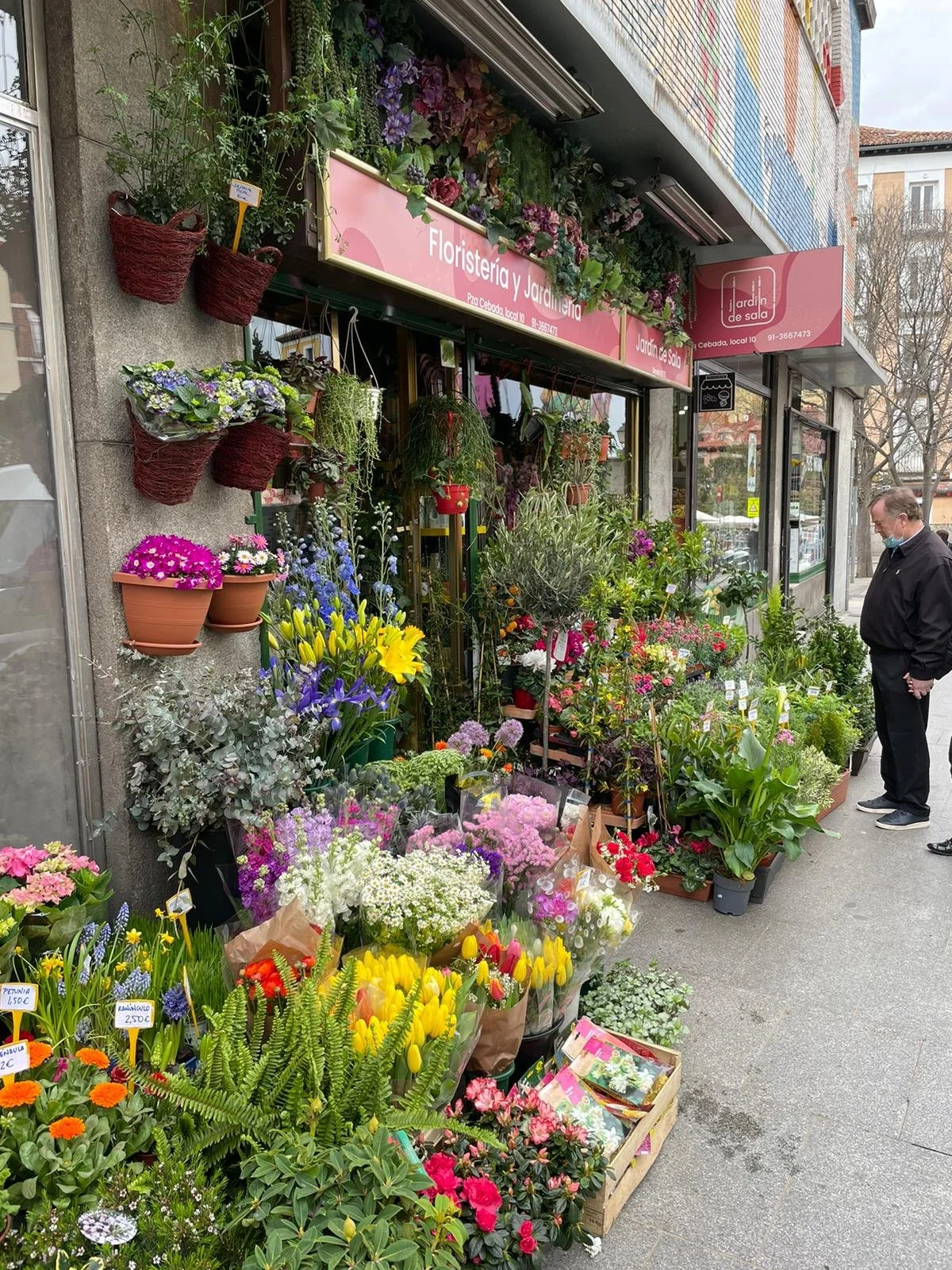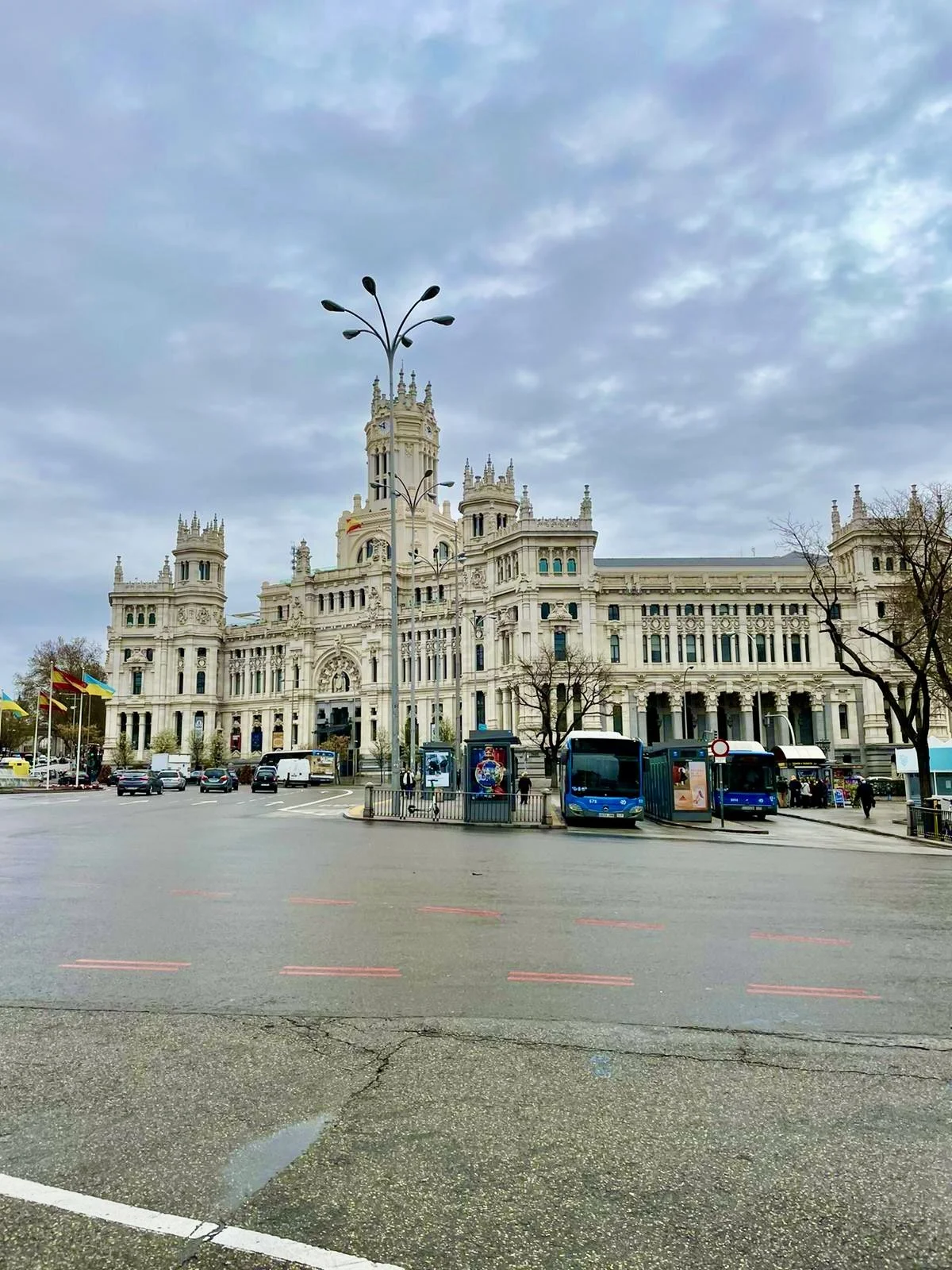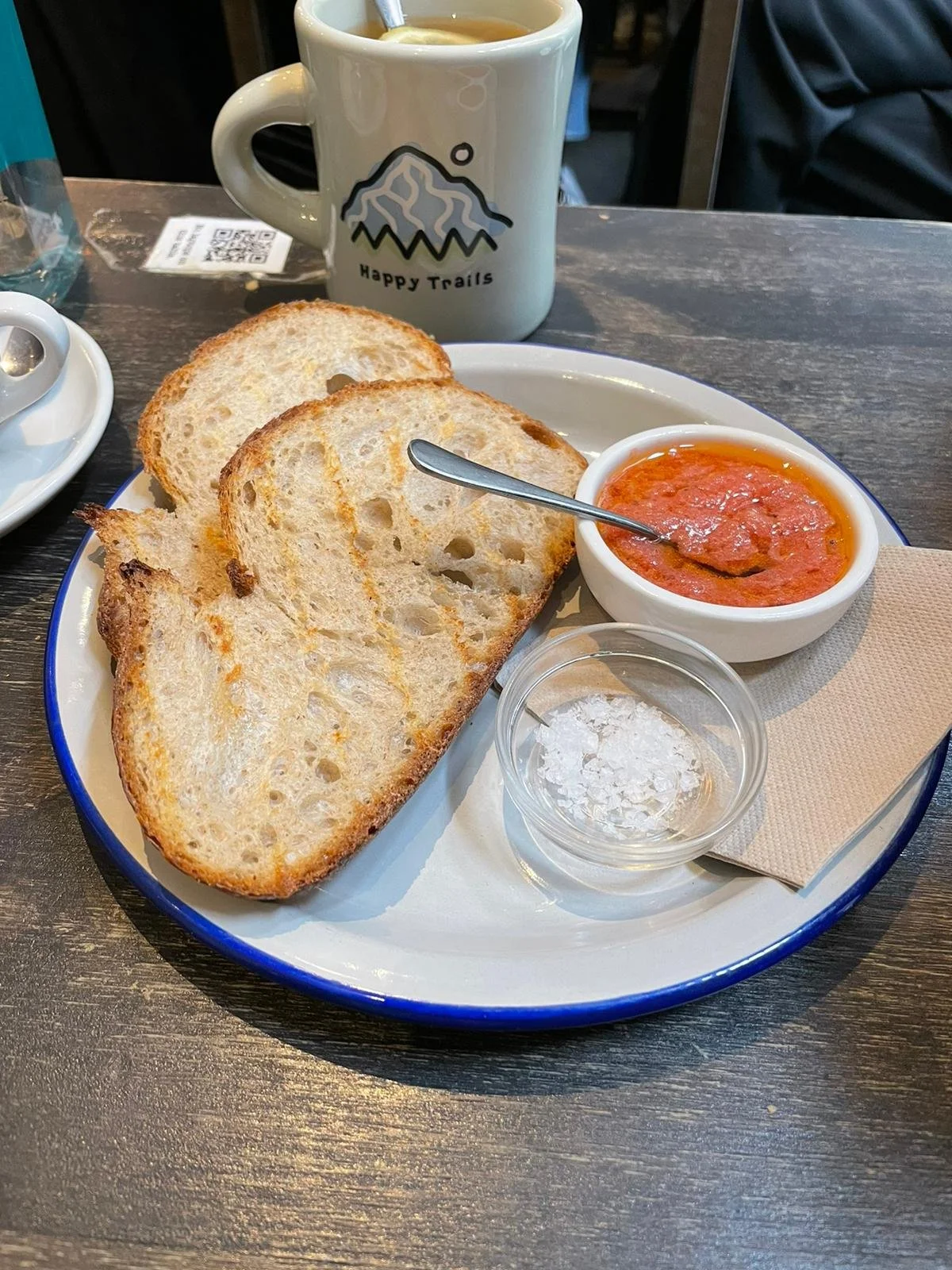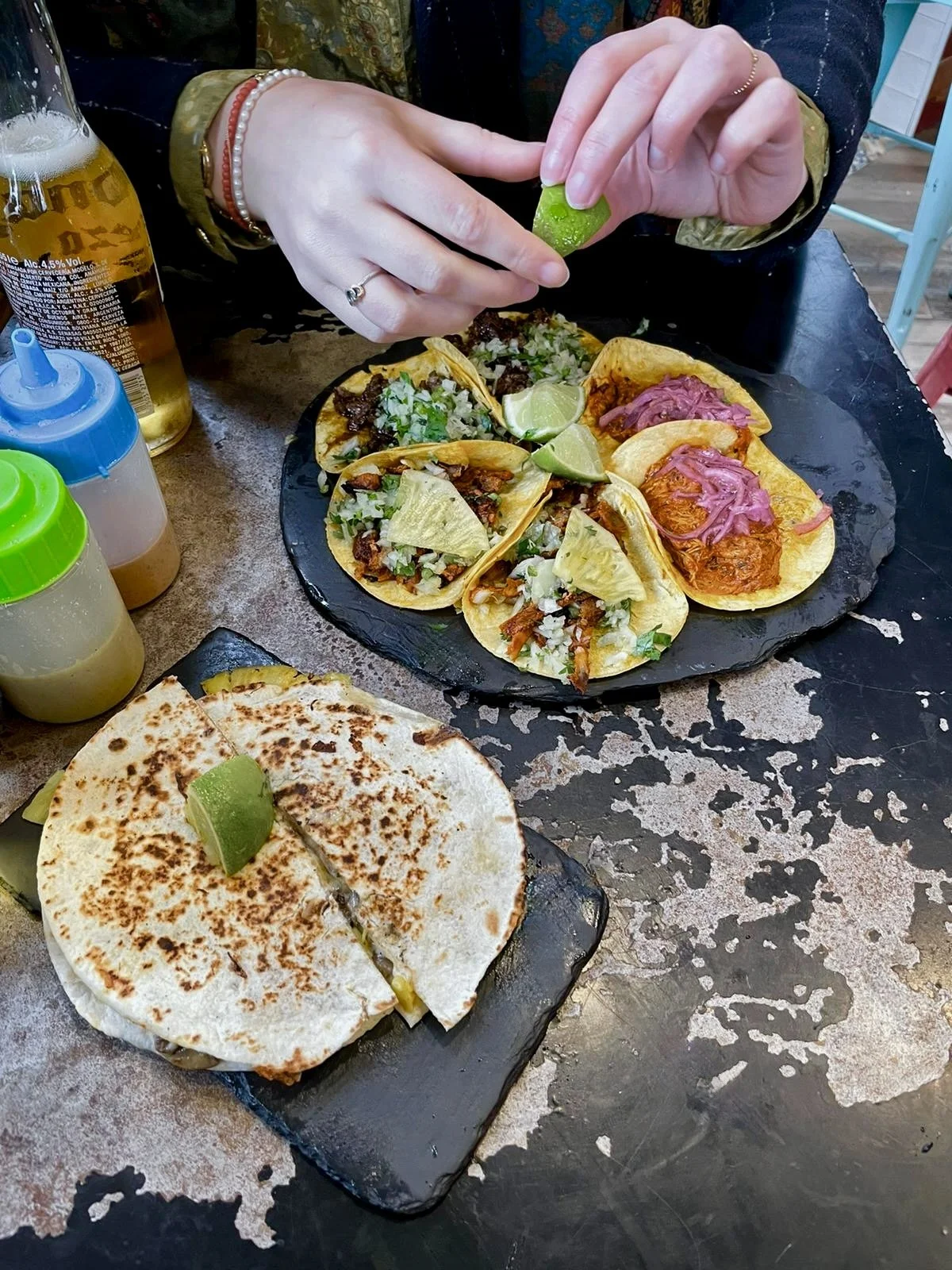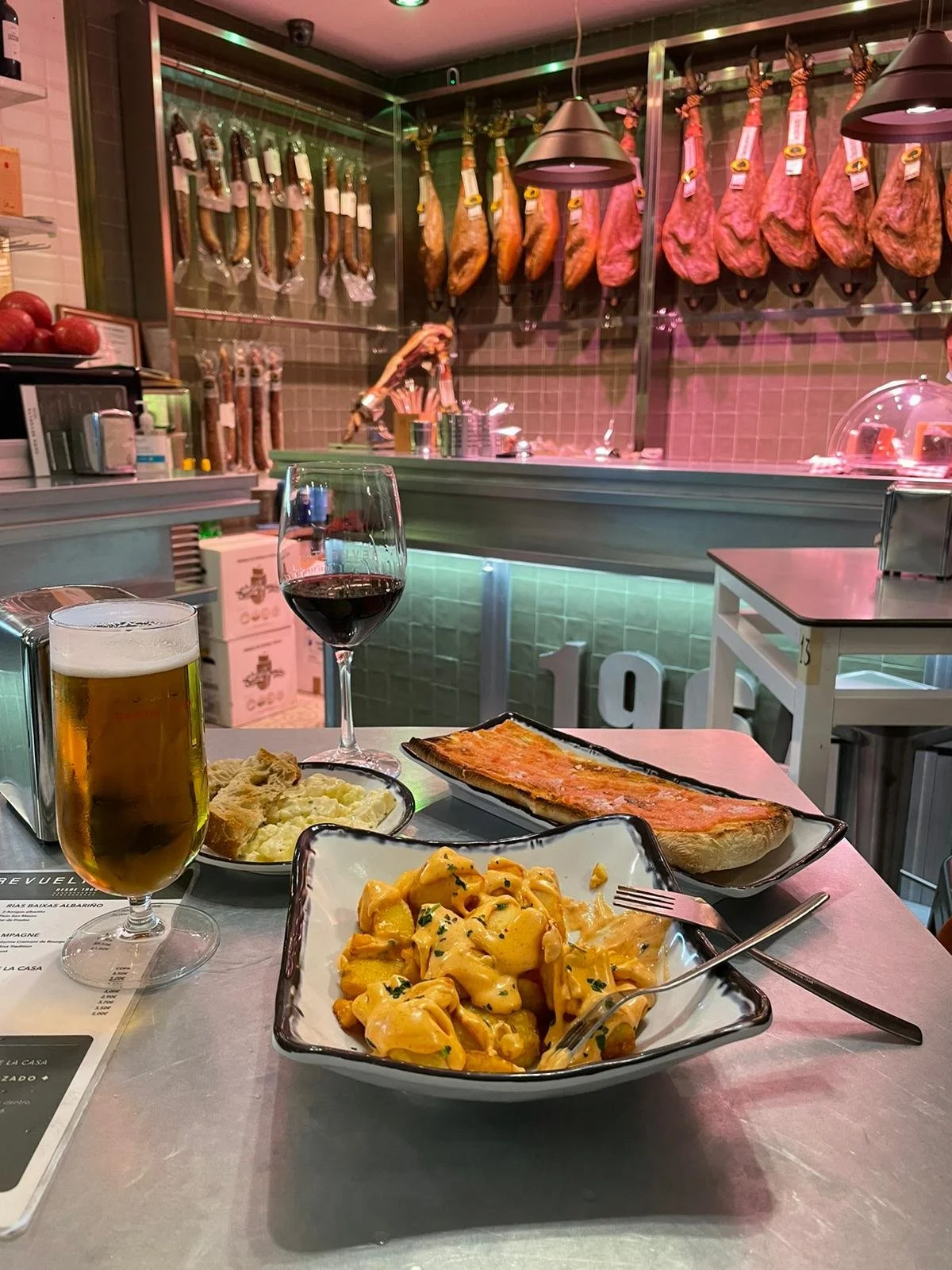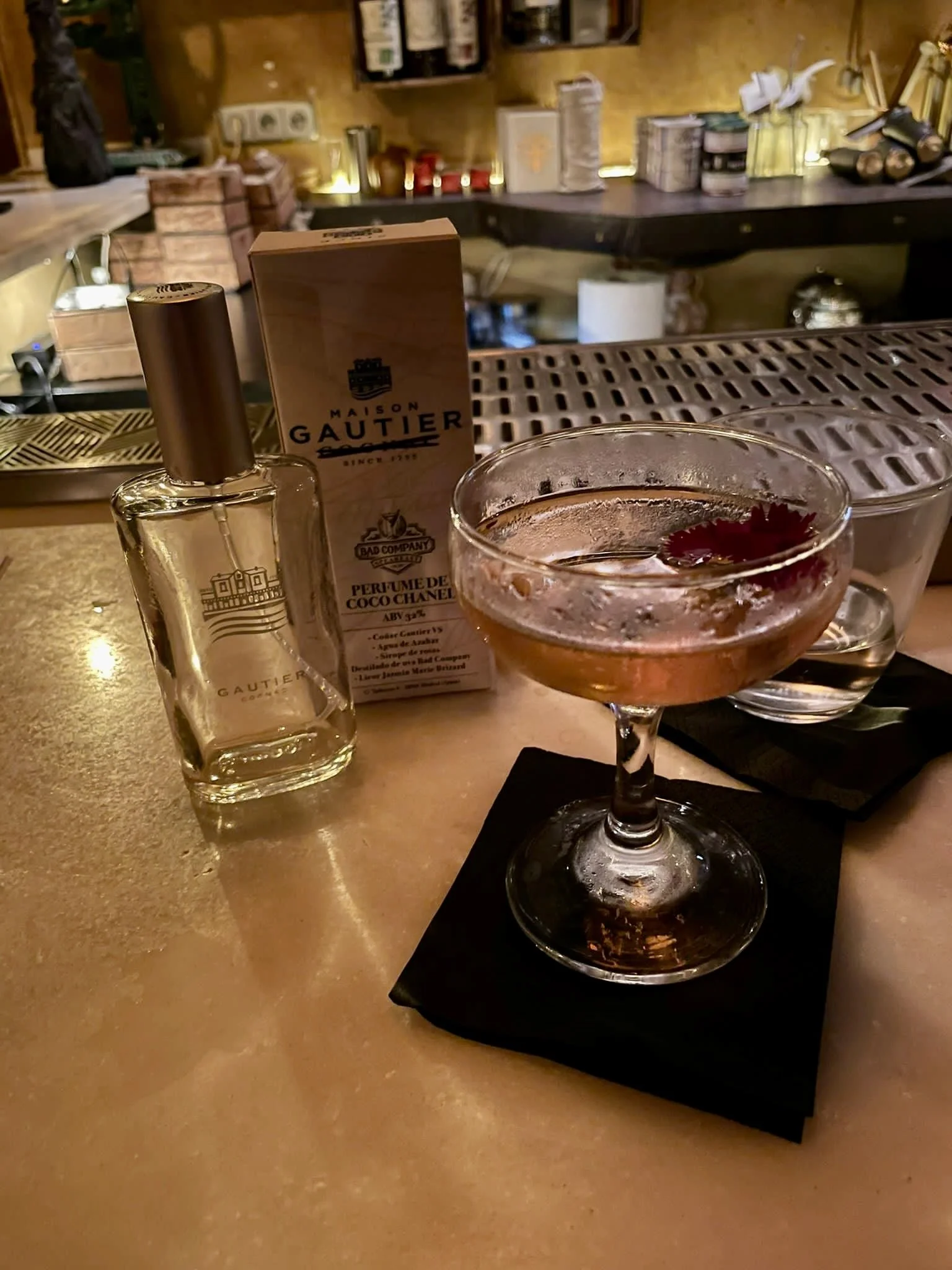Top travel guide of Madrid, Spain
Where: Madrid, Spain | Number of days: 4 | Local currency: Euro
How to get to Madrid?
Plane
Most major and budget airlines will fly directly to Madrid airport. The international airport, Adolfo Suárez Madrid-Barajas, is conveniently located, north-east from the city. Once arrived, you can either opt for a taxi or book a ride with Cabify. It is a quick drive of about 30-40 minutes to the city center, if traffic is low. This will cost you around 30 - 40 euros, depending on which side of the city you are travelling to.
Metro line 8 (the pink line) will take you from Terminal 1-4 to the metro stop ‘‘Nuevos Ministerios’’, in North Madrid, which will take around 25 minutes and costs ~5 euros. Here you can transfer on line 6 or 10, that cross the center of the city.
So depending on your budget and number of suitcases, the metro is very convenient however you will most likely need to transfer lines to get to your hotel or appartment.
Train
As Madrid is right in the center of Spain, the city is very well connected with other cities in Spain. So if you are looking to travel between cities, the Renfe trains are a great option for a smooth and comfortable journey. You can easily travel from/to Barcelona, Valencia and Zaragoza.
Barcelona: it takes about 2,5 - 3 hours to get to Barcelona, and prices vary depending on how far in advance you book, the time of day and the level of comfort you are looking for (Basico, Elige or Premium). Price start at €19 and can go up to €200 one-way. The train in Barcelona leaves from the Sants station and arrives in the south-east of Madrid at the Station Puerta de Atoche, a station connected by most if not all metro lines.
Valencia: it takes about 1,5 - 2 hours to get to Valencia, and prices vary depending on how far in advance you book, the time of day and the level of comfort you are looking for (Basico, Elige or Premium). Price start at €15 and can go up to €130 one-way. The train in Valencia leaves from the Joaquin Sorolla station and arrives in the south-east of Madrid at the Station Puerta de Atoche, a station connected by most if not all metro lines.
Zaragoza: it takes about 1 - 1,5 hours to get to Zaragoza, and prices vary depending on how far in advance you book, the time of day and the level of comfort you are looking for (Basico, Elige or Premium). Price start at €9 and can go up to €90 one-way. The train in Zaragoza leaves from the Delicias station and arrives in the south-east of Madrid at the Station Puerta de Atoche, a station connected by most, if not all, metro lines.
Where to stay in Madrid?
The Hat
One of the best places to stay for solo travellers is definitely the Hat. With its unique and central location, sunny rooftop and clean, comfortable (shared) and affordable rooms it is everything you’re looking for in a hostel. Located right next to Plaza Mayor you literally have the center of Madrid at your doorstep, and you can join all activities that the place has to offer like a pubcrawl or just enjoy your G&T and pan con tomate at the rooftop.
Prices are around €25-40 for a bed in a shared dorm, going up to €70+ on the weekends (Fri-Sat).
Highly recommend booking this place if you are travelling by yourself and are looking for a great hostel to meet fellow travellers.
7 islas
If you are looking for a more upscale place to stay, I can recommend 7 islas. Right behind the Gran Via, the artery of Madrid, you can find this boutique hotel with spacious rooms and a cool one-of-a-kind cocktail bar. It’s location is perfect between the hip and happening area of Malasaña, the restaurant-filled and LGBTQI+ friendly neighboorhood. The hotel is conveniently located next to the Gran Via metro station, and across the street from a Dia supermarket.
Prices vary between €100-150 for a two-person room, if you are looking to splurge for a special stay, you can book the penthouse with terrace for €250-320.
Neighbourhoods
Madrid is split into a couple very distinct neighbourhoods, with each a unique atmosphere.
As I mentioned above, Chueca is the central area, a bit north-east from the Gran Via, which is known for it’s gay friendly bars, parties and events. The neighbourhood is filled with rainbow flags and buzzing at night, because of the many restaurants and bars.
Malasaña is the place to get a good cup of coffee, spot many dogs and be inspired by the graffiti. It is also the perfect place for vintage shopping and enjoy a freshly pressed juice. You could say it is a bit of the ‘‘hipster’’ area of the city.
Sol is the beating heart of the city, this is the area where you can find the Puerta Del Sol, the absolute middle of Madrid. This square is one of the busiest areas because of the connection it provides to all the other areas and due to the historical buildings and landmarks.When walking around this square you will spot the Bear and Strawberry tree, the heraldic symbol of Madrid, and the former Royal house of the Post Office, which now houses the office of the President of the community of Madrid. Around the square you can find most international and Spanish brands, don’t forget to visit the El Corte Ingles just around the corner from the square to find the latest luxury trends and for some food-related souvenirs in the basement.
Retiro is famous for its park and its many world-class museums in the ‘Triangle of Art’.
Lavapies and la Latina are more laidback areas in the south of Madrid. Lavapies is known for being multicultural which is reflected in the food options, if you feel like eating a good curry or African food, definitely pay a visit to the many options in Lavapies. Nothing too fancy, but just good and affordable food. La Latina is a bit more authentic, this is the area where you find most tapas restaurants. In the area where La Latina collides with Lavapies, you will find El Rastro every sunday of the year, Madrid’s oldest and most authentic flea market. Here you will find antiques, clothing, books, toys, and anything else you can think of. It can get quite busy so mind your bag and wallet for any pickpocketing.
Salamanca, which is right next to the Retiro Park is the posh neighbourhood of the city. It is a nice and quiet area, where most upper-class Madrileans spend their time. Enjoy an afternoon of window shopping and people watching.
Plaza de los Carros
Calle Serano
Malasaña
What to do in Madrid?
The best thing you can do in Madrid is to slow down your pace and enjoy the city and all it has to offer. Look up once in a while to enjoy the impressive buildings and architecture, or sit down for a coffee or a caña and be inspired by the fashionable Madrileans.
Mercados
The many mercados in the city are a perfect place to enjoy some tapas and a good glass of Spanish red wine. I wouldn’t necessarily recommend to do this at Mercado San Miguel: a food market tailored to tourists around the corner from Plaza Mayor. I would suggest to have a quick browse to catch the vibe and gaze at all the food that is on offer. The place is usually very crowded and slightly overpriced, so not the best place to spend the afternoon. Mercado San Ildefonso is a different story, three floors filled with various food and drink stalls in Malasaña (Calle Fuencarral 57). This mercado is more laid back and casual and still manages to offer a great variety of food, pintxos, tapas and drinks. If you’re looking for an actual market, visit Mercado de la Cebada, a real authentic fresh market in the La Latina neighbourhood where local stop by for their daily groceries.
Once you’ve picked up some things at Mercado de la Cebada, stop by News & Coffee for deliciously fresh coffee and magazines that you won’t easily find in your local bookshop.
Shopping
Whether you are looking for the newest trends, biggest names in fashion or finding vintage treasures, Madrid has lots to offer. All the high streets brands can be found on and around Gran Via. Between Callao and Gran Via metro stations you will find all the big stores (H&M, Zara, Mango, Massimo Dutti). Calle de Fuencarral, just around the corner from Gran Via, houses more boutiques stores and the slightly more upscale brands as Diesel and Tommy Hilfiger. While you can find all the luxury and high-end fashion brands on Calle Serano (Gucci, Prada, Louis Vuitton, etc). Vintage lovers can explore Calle de Velarde in Malasaña, with stores like Magpie and Alphaville, and find great treasures at affordable prices.
Museums and Parks
Madrid’s most famous park, Retiro, is a must visit. On weekends, the park is filled with family and friends that are enjoying a walk, a picnic or rent a boat for a little round around the pond. One of the highlights is the Palacio de Cristal, a building in the middle of the park. It was originally build to display the exotic flowers coming from the Philipinnes, a former colony of Spain. Nowadays the space is used for exhibitions of projects and installations of artists. The pond in front, shows a reflection of the palace on sunny days and is home to turtles and and a family of swans.
After a stroll through the park it is a short walk to El Museo del Prado, one of the most reknown art museum in the world. The collection offers the work of Goya, Velázquez, Rubens and Rembrandt and others from the 14th until the 19th century. Tickets can be bought online or at the museum and cost €15. From Monday - Saturday, you can visit the Prado museum for free from 6 - 8pm, and on Sundays and holidays from 5 - 7pm. Keep in mind that the queues will be a lot longer during these times.
If you are looking for more modern and recent art, the Museo Nacional Centro de Arte Reina Sofía is the place to visit. Named after the former queen, the museum houses the world famous Guernica painting of Picasso and work of Salvador Dalí and Juan Gris. A ticket is €12, check the website for the latest updates on free entrance and opening times: Reina Sofía Museum.
The third museum that is part of the Triángulo del Arte or Triángulo de Oro (Triangle of Art or Gold) at Paseo del Prado is the Thyssen-Bornemisza museum. This museum brings together the work of many known artists, both classic and modern. The collection includes Rembrandt, van Gogh, Rubens, Roy Lichtenstein and Francis Bacon. Tickets are €13 and see for free entrance options the website: Thyssen-Bornemisza museum.
More highlights
If you are looking for a more royal activity, you can visit the Royal Palace of Madrid. The palace is the official residency of the Spanish Royal family, however it is currently used for ceremonies, and lucky us, open to the public. Explore the grounds around the palace, or visit the building itself and be amazed by its wealth of art, the overwhelmingly sized rooms and the impressive tapestry that covers most spaces. Tickets are €13, but like the museums, during some hours the palace if free to visit: Royal Palace of Madrid.
A fifteen minute walk from the palace you can find El Templo de Debod. The temple was gifted by the government of Egypt for the help of Spain in protecting cultural heritage in times of floodings. It is a spectacular sight to see the buildings outside of their ‘natural habitat’ and the perfect backdrop and location to watch the sunset. There is no need to buy tickets to visit the temple, but it isn’t open the entire day, so make sure to check the current opening times here.
Where to eat and drink in Madrid?
Spain and Madrid are famous for its great food to share, and you will find patatas bravas, small caña’s of beer and platters filled with manchego and jamón on almost every street corner. The gastronomy in the capital is next level, and you will be able to find a great spot for food to satisfy each type of diet. Whether you are looking for a quick bite or a long multiple course dinner, Madrid offers it all. Below the spots I’ve visited and keep coming back to.
Breakfast
The most important meal of the day can be found in many places in Madrid and can be as simple as a piece of pan con tomate with a coffee. For something a bit more fancy, HanSo cafe is a great place to start. This popular place has two locations within a walking distance of 10 minutes: Cost.ª de los Ángeles 7 and Calle del Pez 20. HanSo Cafe is a specialty coffeeshop with great breakfast options. The Turkish eggs (Cilbir) on the menu is a deliciously fragrant and filling dish, the perfect start for a day strolling around Madrid.
Lunch
After strolling around the Retiro Park I would highly recommend to pay Il Tavolo Verde a visit. This cute and cosy restaurant is the perfect place for a (vegetarian) lunch, a slice of carrot cake and a warm cup of coffee. What makes this place unique is the fact that the restaurant is filled with vintage and antique finds that are all for sale.
If you’re more of a meat and Mexican lover, then you can not miss Takos Al Pastor, right around the corner of Sol square. Don’t be discouraged by the queue that is wrapped around the corner, the line moves fast, and trust me, is well worth the wait. The menu is simple and the food is fresh. Go for a Bistec quesadilla, the traditional tako al pastor or tako chocinita pibil. Whichever one you choose, it will be served within minutes for you to enjoy and at €1 - €3,5 per tako and quesadilla, it won’t break the bank. Another place, close to Sol, for a nice lunch is El Jardín de Salvador Bachiller, a secluded rooftop garden (4th floor) in the middle of the busy shopping street. You need to enter the Salvador Bachiller store to get access to the stairs to the restaurant.
Dinner
Right in the heart of the Chueca neighboorhood, you will find Propaganda, a wine bar but one with an extensive and tasty menu with an Italian touch. Affogato, burrata and ham can all be enjoyed, obviously paired with a nice glass of wine. We had a great dinner, especially thanks to the friendly staff. I would highly advice to make a reservation. Another place in Madrid that requires a reservation is the Argentinian restaurant El Camoatí. Unless you’re an early diner than there is no need, as the restaurant starts buzzing at 21:30, when the locals arrive. El Camoatí is a cosy restaurant with limited seating, can highly recommend the provoleta fuegolone (spicy cheese flambeed with tequila) as a starter.
And you can’t leave Spain without enjoying some tapas. Besides the many markets where you can have a quick snack, we found this place around the corner from Mercado San Miguel, and are still dreaming of the Ribera wine, pan con tomate and patatas bravas we enjoyed there. Casa Revuelta Cuchilleros 10 is a small restaurant filled with locals and a menu with all the familiair Spanish tapas. A second location can be found at Calle de Latoneros 3.
Drinks
If you’re looking for a special night out and enjoy creative cocktails, then the speakeasy bar Bad Company 1920 is your go to place. Found behind the Gran Via it is a popular spot for a drink and a special experience. Be surprised by the level of detail and don’t forget to make a reservation to ensure a seat. For a nice drink during the day and a beautiful view from a higher point, I would recommend paying Círculo de Bellas Artes a visit. This cultural center houses exhibitions, concerts and a great rooftop. To visit the center you are required to pay a small fee (€5), but it is well worth the view.

